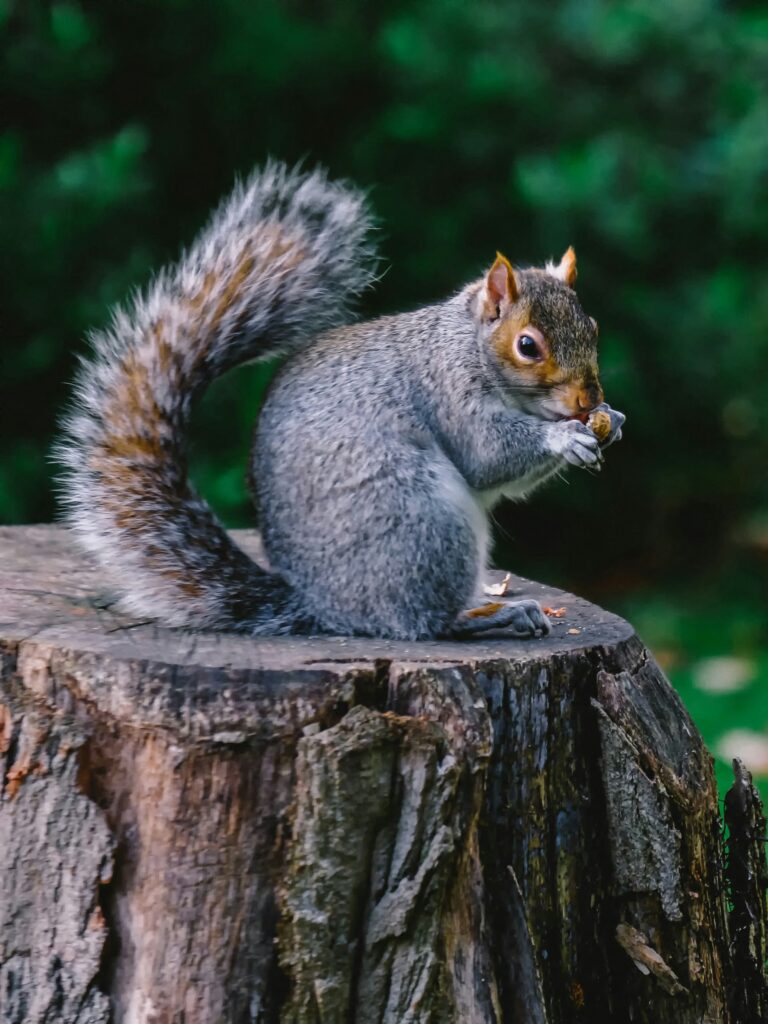
Squirrel hunting is one of the most rewarding and accessible forms of hunting. It’s a great way to introduce beginners to the sport, sharpen your marksmanship, and enjoy the outdoors. Whether you’re a seasoned hunter or just starting out, this guide will cover everything you need to know about hunting for squirrels, including the best time for squirrel hunting, essential gear like a squirrel hunting vest, and the best gun for squirrel hunting. Let’s dive in!
Why Hunt Squirrels?
Squirrel hunting is more than just a pastime—it’s a tradition that connects us to nature and provides a sustainable source of food. Here’s why you should consider it:
- Accessible for Beginners: Squirrel hunting requires minimal gear and can be done in most wooded areas.
- Improves Marksmanship: Squirrels are small, fast, and challenging targets, making them perfect for honing your shooting skills.
- Sustainable and Delicious: Squirrel meat is lean, flavorful, and a great addition to your wild game recipes.
- Year-Round Opportunity: In many states, squirrel hunting seasons are long, giving you plenty of chances to get out there.
When is the Best Time for Squirrel Hunting?
Timing is everything in hunting, and squirrels are no exception. Here’s when to plan your hunt:
1. Early Morning and Late Afternoon
Squirrels are most active during the first few hours after sunrise and the last few hours before sunset. This is when they’re out foraging for food, making them easier to spot and hunt.
2. Fall Season
Fall is arguably the best time for squirrel hunting. The leaves are starting to fall, making it easier to see squirrels moving through the trees. Plus, squirrels are busy gathering nuts for the winter, so they’re more active.
3. Winter Hunts
In winter, squirrels are less active but still forage on milder days. With the leaves gone, visibility is excellent, and you can often spot them moving along tree branches.
4. Spring and Summer
Spring and summer can be productive, but the dense foliage makes it harder to spot squirrels. Focus on areas with abundant food sources like nut-bearing trees.
Essential Squirrel Hunting Gear
Having the right gear can make or break your hunt. Here’s what you’ll need:
1. Squirrel Hunting Vest
A good squirrel hunting vest is a must-have. Look for one with plenty of pockets to store ammunition, calls, and your harvested squirrels. Many vests also come with a game bag for carrying your catch.
2. Best Gun for Squirrel Hunting
Choosing the right firearm is crucial. Here are the top options:
- .22 LR Rifle: A classic choice for squirrel hunting. It’s accurate, quiet, and perfect for headshots to preserve meat.
- .410 Shotgun: Great for beginners or hunting in dense cover. The spread increases your chances of hitting a moving target.
- 20-Gauge Shotgun: Offers more power than a .410 and is ideal for longer shots.
- Air Rifle: In some areas, air rifles are legal for squirrel hunting and provide a quiet, low-cost option.
3. Ammunition
- For .22 LR rifles, use subsonic or hollow-point rounds to minimize noise and maximize effectiveness.
- For shotguns, use #6 or #7.5 shot for a good balance of range and pellet density.
4. Camouflage Clothing
Squirrels have sharp eyesight, so wearing camouflage that matches your environment is key. Don’t forget a hat and face mask to break up your outline.
5. Binoculars
A pair of compact binoculars can help you spot squirrels moving in the treetops or at a distance.
6. Squirrel Calls
Squirrel calls mimic the sounds of squirrels to attract them closer. Barking and distress calls are particularly effective.
7. Hunting Boots
Comfortable, waterproof boots are essential for navigating uneven terrain and staying quiet while stalking.
How to Hunt Squirrels: Tips and Strategies
Now that you’ve got your gear, it’s time to talk strategy. Here’s how to hunt squirrels like a pro:
1. Scout Your Hunting Area
Before your hunt, spend time scouting the area. Look for signs of squirrel activity like chewed nuts, droppings, and nests (called dreys). Focus on areas with nut-bearing trees like oaks, hickories, and walnuts.
2. Still Hunting
Still hunting involves finding a good spot, sitting quietly, and waiting for squirrels to appear. Choose a location with good visibility and plenty of squirrel activity. Be patient—squirrels will often freeze when they sense danger, so wait for them to move before taking your shot.
3. Stalking
Stalking involves moving slowly and quietly through the woods, stopping frequently to scan for squirrels. This method works best in areas with less dense cover.
4. Use Calls
Squirrel calls can be incredibly effective. Use a barking call to mimic a squirrel’s alarm call, which can pique their curiosity and draw them closer. Distress calls can also attract squirrels looking to investigate the commotion.
5. Shoot Squirrels Ethically
Aim for headshots to ensure a quick, humane kill and preserve the meat. If you’re using a shotgun, aim for the center of the squirrel’s body to ensure a clean hit.
Best Places to Hunt Squirrels
Knowing where to hunt is just as important as knowing how. Here are some top locations:
- Hardwood Forests: Oak, hickory, and walnut trees are squirrel magnets.
- Edge Habitats: The transition zones between forests and fields are prime squirrel territory.
- Creek Bottoms: Squirrels love areas near water sources, especially if there are nut-bearing trees nearby.
- Public Hunting Lands: Many state and national forests offer excellent squirrel hunting opportunities.
Squirrel Hunting Tips for Beginners
If you’re new to squirrel hunting, here are some tips to get you started:
- Start Small: Focus on areas with high squirrel activity to build your confidence.
- Practice Shooting: Spend time at the range to improve your accuracy with your chosen firearm.
- Stay Quiet: Squirrels have excellent hearing, so move slowly and avoid unnecessary noise.
- Be Patient: Squirrel hunting requires patience and persistence. Don’t get discouraged if you don’t see action right away.
Field Dressing and Cooking Squirrel
Once you’ve harvested your squirrel, it’s time to prepare it for the table. Here’s a quick guide:
1. Field Dressing
- Make a small incision along the belly and remove the internal organs.
- Skin the squirrel by making a cut around the base of the tail and pulling the skin away from the body.
- Rinse the meat thoroughly and store it in a cool place until you’re ready to cook.
2. Cooking Squirrel
Squirrel meat is lean and flavorful, perfect for stews, soups, or frying. Here’s a simple recipe to try:
Squirrel Stew
- Ingredients: Squirrel meat, potatoes, carrots, onions, garlic, broth, and seasonings.
- Instructions: Brown the squirrel meat in a pot, add chopped vegetables and broth, and simmer until tender. Serve hot with crusty bread.
Final Thoughts
Squirrel hunting is a timeless tradition that offers excitement, challenge, and a connection to nature. With the right gear, knowledge, and strategies, you’ll be well on your way to becoming a successful squirrel hunter. Remember to respect the land, follow local hunting regulations, and always prioritize safety.
So grab your squirrel hunting vest, load up your best gun for squirrel hunting, and head to the woods. The squirrels are waiting, and the adventure is yours to claim.
Happy hunting, and may your aim be true!
P.S. If you’re looking for more tips or gear recommendations, drop a comment below or reach out. I’m always here to help fellow hunters make the most of their time in the field!
